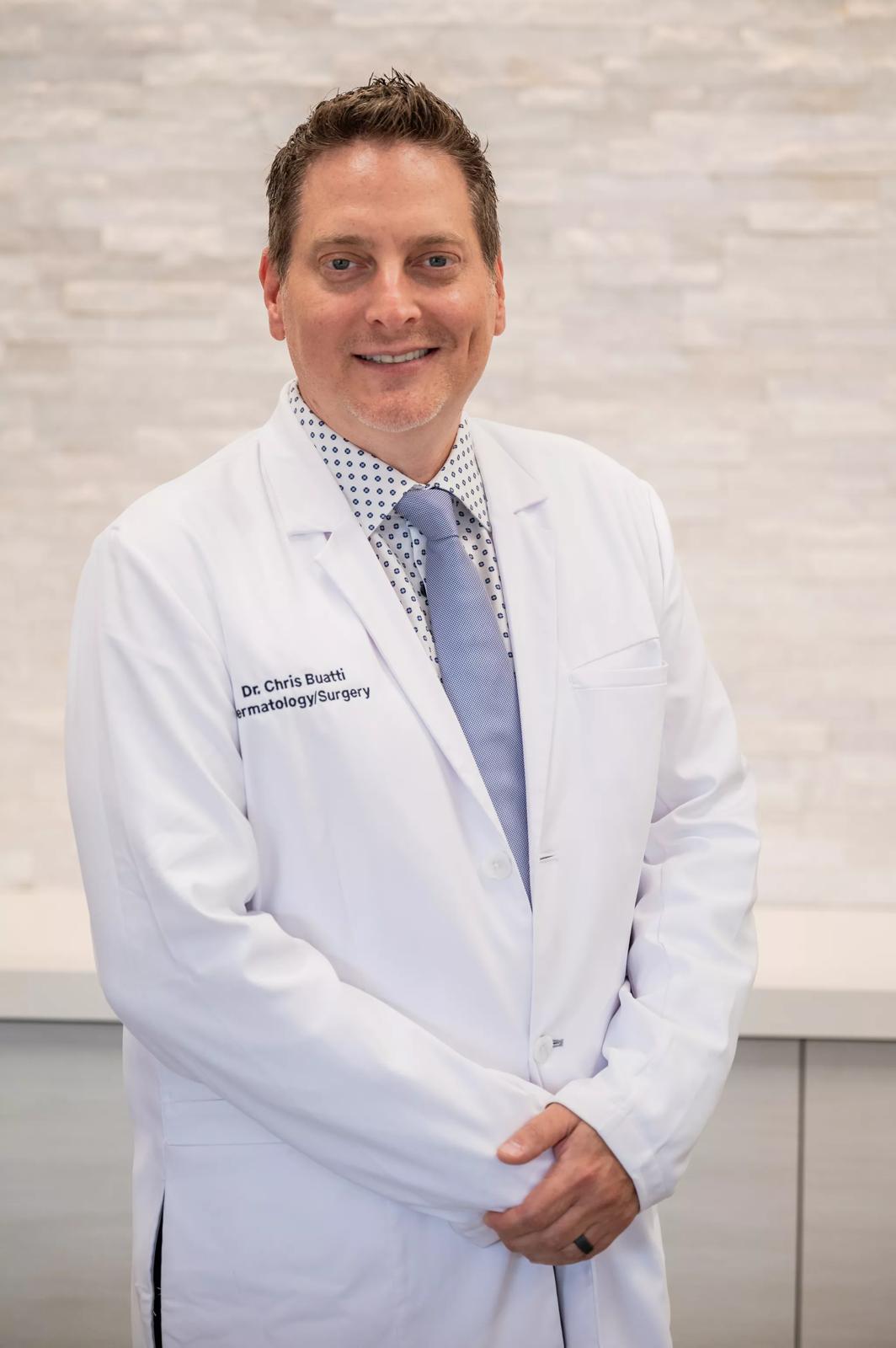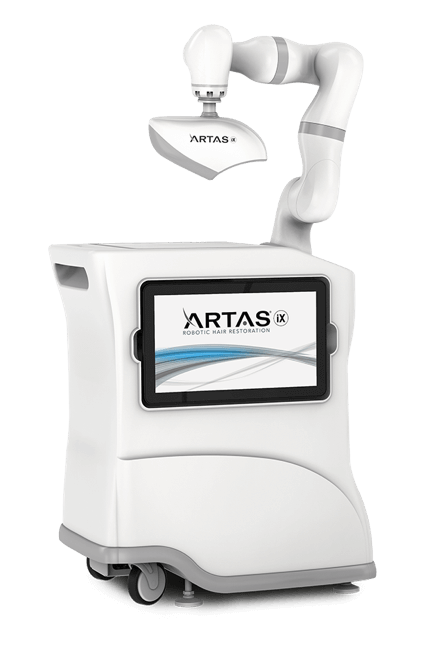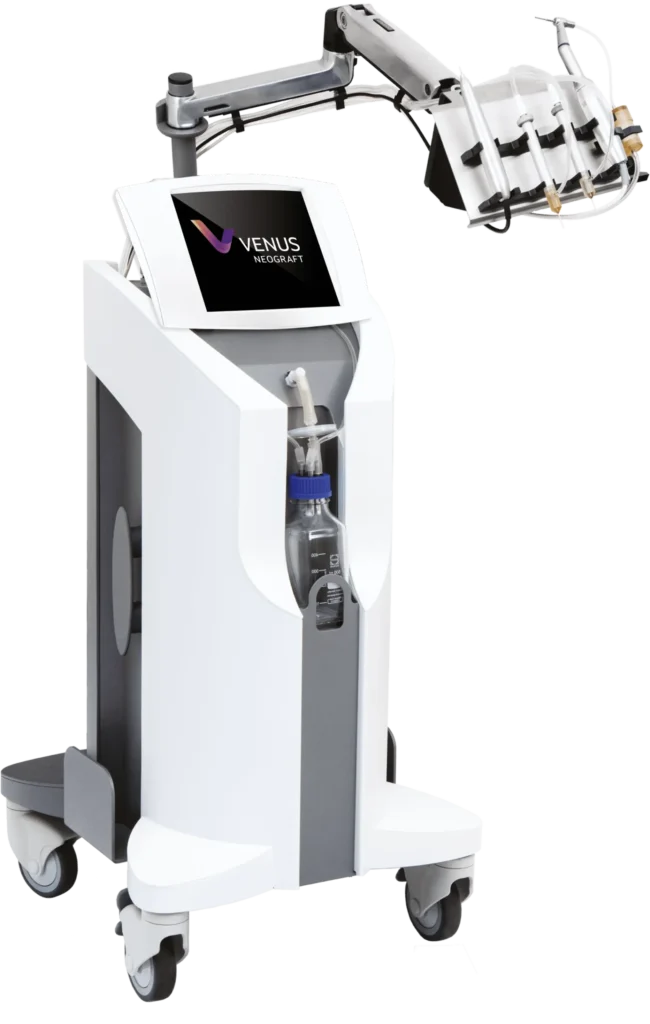WELCOME TO OAKLAND HILLS HAIR CLINIC
Your Trusted Hair Surgeon in Auburn Hills, MI,
Using the latest advancements in hair restoration technology, Dr. Buatti employs a range of cutting-edge surgical procedures to address various types of hair loss, including Artas and Neograft.
His meticulous technique begins with a comprehensive evaluation of each patient’s unique needs and desired outcomes. With an in-depth understanding of the intricacies of hair growth, Dr. Buatti customizes treatment plans to restore both hair density and aesthetic balance.
Dr. Buatti seamlessly integrates advanced grafting techniques with his surgical expertise, minimizing scarring and maximizing graft survival. His attention to detail and precision ensure that transplanted hair blends seamlessly with existing hair, creating a natural and undetectable result that enhances the patient’s overall appearance.

ARTAS® Robotic Hair Restoration
Feel years younger with ARTAS® Robotic Hair Transplant. This FDA-cleared, physician-assisted technology provides permanent, natural-looking results without the plugs, pain and stitches associated with traditional hair transplants like strip surgery. This minimally invasive procedure does not leave a linear scar, so you have the freedom to cut and style your hair the way you like without having to hide a scar.


NeoGraft® Robotic Hair Restoration
NeoGraft®’s revolutionary automated Follicular Unit Extraction (FUE) and implantation technology leaves no linear scar and is minimally invasive with fast patient recovery. It eliminates the inefficiencies of common manual tools and procedures while enabling physicians to offer hair transplants with consistent clinical outcomes. NeoGraft® delivers superior clinical efficacy and high patient satisfaction.
The Results Speak for Themselves
OAKLAND HILLS HAIR CLINIC


Free Hair Consultation
Schedule your Free Scalp Assessment with Dr. Buatti Below!
Guaranteed Results
At Oakland Hills Hair Clinic, you never have to worry about a bad hair day again. We use the very best Hair technology which ensures you get the results you need for a fuller head of hair.
Tailored Prescriptions for Hair Loss
Whether Pre-op or Post-op, Dr. Buatti and his dedicated team will work with you to customize a hair loss med plan to assist you in getting or keeping your hair.

FIND YOUR PATH TO A FULLER AND NATURAL-LOOKING HEAD OF HAIR WITH FUE MINIMALLY INVASIVE HAIR TRANSPLANT SURGERY
Are you struggling with thinning hair or receding hairline? Have you exhausted all other treatments and products without seeing any results? If yes, then it’s time for you to consider the ultimate solution: a Follicular Unit Extraction (FUE) hair transplant. This innovative procedure can help you restore a fuller, more natural-looking head of hair.
Our Award Winning Medical Staff





Overview
This guide aims to provide detailed insights into the Follicular Unit Extraction (FUE) hair transplant procedure. FUE is a minimally invasive hair transplant surgery that enables the individual harvesting and transplantation of hair follicles. FUE has continued to establish itself as the best hair transplant method due to its natural-looking results, lack of linear scars, and fast recovery time. This guide will explore the FUE technique, its benefits, risks, limitations, and the pre and post-operative care required to ensure successful results. At Oakland Hills Hair Clinic, we know the emotional toll hair loss can have on your self-confidence and how frustrating it can be. Therefore, we are committed to providing accurate and reliable information to help you find your way to hair restoration. Whether you are considering FUE hair transplant for the first time or have questions about the process, this guide will be your go-to resource.
UNDERSTANDING HAIR LOSS AND ITS CAUSES
Male or female pattern baldness, Androgenetic Alopecia, affects around 50 million men and 30 million women in the United States alone. Approximately 40% of men experience visible hair loss by age 35, and this percentage increases to 65% by age 60. Moderate to extensive hair loss is prevalent, ranging from 16% for men aged 18-29 to 53% for men aged 40-49. [Source: PubMed]. Female pattern hair loss: Around 40% of women are affected by female pattern hair loss (FPHL) by age 50. [Source: PMC] Hair loss can profoundly impact a person’s confidence and youthfulness. Our hair is often seen as a symbol of vitality and attractiveness, and losing it can lead to feelings of self-consciousness and insecurity. The visible signs of thinning or receding hairline can make individuals feel older than they are, affecting their overall perception of themselves. Loss of self-esteem affects social interactions and professional opportunities, as it may be perceived as a sign of aging or diminished health.
In recent years, remarkable strides have been made in hair restoration, offering individuals new hope and effective solutions for hair loss. The traditional follicular unit transplantation (FUT) method replaces advanced techniques like follicular unit extraction (FUE). This method has enhanced the precision and naturalness of results, reduced recovery times, and minimized scarring. Additionally, pharmaceutical advancements have introduced FDA-approved medications like finasteride and minoxidil, offering non-invasive options for slowing or reversing hair loss. These collective breakthroughs signify a transformative era in hair restoration, providing individuals with diverse, practical, and personalized solutions to address the complex issues of hair thinning and baldness.

Benefits of FUE Hair Transplant
The Follicular Unit Extraction (FUE) method stands out for several key factors distinguishing it from traditional hair transplantation techniques. One of its notable features is the individual collection of hairs, offering a meticulous and targeted approach. This precision increases the chances of achieving a denser, more natural-looking result than other methods. Importantly, with FUE, there is no loss of a strip of hairline, preserving the natural contours of the patient’s scalp and no linear scar. The procedure allows for a single hair transplant involving thousands of hair grafts (most procedures are between 2,000 and 2,500 grafts), demonstrating its efficiency in addressing extensive hair loss. FUE has gained prominence for its versatility, as it is the only helpful technique for body hair or facial hair transplant.
Moreover, we use an assisted hair transplant method called NeoGraft® Or ARTAS® that enables the grafting of thousands of follicles in a single day, making it a time-efficient option for those seeking comprehensive restoration. FUE transplants with NeoGraft® Or ARTAS® also tend to have an exceptionally high graft success rate. Patients experience minimal discomfort during treatment, no unsightly linear scar, and a very short recovery time, with many returning to work the next day. The results are very natural-looking and can be worn with even short hairstyles. Overall, these distinguishing factors position NeoGraft® Or ARTAS® as the cutting-edge and highly effective method in hair transplantation. Patient satisfaction is very high: recent reviewers on RealSelf give NeoGraft® and ARTAS® a 95% Worth It Rating.

RISKS AND POTENTIAL COMPLICATIONS OF FUE HAIR TRANSPLANT
Though considered safe, the Follicular Unit Extraction (FUE) hair transplant procedure is not without potential risks and complications. Every patient needs to know about potential risks and benefits to make informed decisions about this procedure. One of the most common issues that can arise post-procedure is pain. Depending on individual tolerance levels, this discomfort can range from mild to moderate. Swelling and edema are not unusual, often occurring in the scalp donor area due to the extraction process. Patients may sometimes experience numbness in the treated area, which subsides over time. Itching is another common side effect that, while usually harmless, can cause discomfort and should be monitored.
Another potential complication is infection. While rare, it’s important to note that any surgical procedure carries this risk. Infections can occur if proper aftercare instructions are not followed or the patient is predisposed to such complications. Anaphylaxis, though extremely rare, is a severe allergic reaction that can occur in response to the anesthesia used during the procedure. Patients with known allergies should discuss this with their surgeon before the procedure. Folliculitis, inflammation of the hair follicles, can also occur. It usually presents as small, white-headed pimples around one or more hair follicles. In a minority of cases, transplanted hair grafts don’t survive, leaving patients with the same hairline they had before surgery. Lastly, there is the risk of keloid scarring, cysts, and lost grafts. While these complications are rare, they can significantly impact the patient’s satisfaction with the procedure and overall results. It’s crucial to understand the potential risks and complications. As with any surgical procedure, discussing these concerns with a physician is essential before deciding on the best action.
Achieving a Fuller and Natural-Looking Head of Hair With FUE Hair Transplant
The good news is that solutions are available to address hair loss and restore confidence and a more youthful appearance. At Oakland Hills Hair Clinic, our team of experts understands the emotional impact of hair loss and offers advanced hair restoration treatments tailored to your needs. Our innovative techniques like NeoGraft® and ARTAS® FUE and our personalized approach, including genetic testing to tailor a customized regenerative treatment, aim to help you regain a full head of hair and reclaim your self-assurance, allowing you to look and feel younger again. Don’t let hair loss define your self-image – take control and explore the possibilities with Oakland Hills Hair Clinic.
FUE HAIR TRANSPLANT
FREQUENTLY ASKED QUESTIONS
Am I a good candidate?
Individuals with moderate hair loss and adequate donor hair on the back of their scalp may be good candidates for a Hair Transplant. This procedure is suitable for patients who want to wear a short haircut or those who want minimal activity restrictions after the transplant. Moreover, the FUE System is effective for scar camouflage procedures in patients who have had previous linear harvests and for body hair transplants. It is essential to have reasonable cosmetic goals as hair transplantation can result in natural-looking outcomes but cannot restore hair density to that of teenage years. The doctor will assess how much coverage is necessary to achieve the desired appearance. Patients with greater hair density and more donor hair can expect fuller results.
How soon will I see the results?
Hair grafting is a procedure that involves taking hair from the back of your head, where it naturally grows, and transplanting it to where you are balding. The transplanted hair follicles are alive and will continue to grow normally in their new location. After the transplant, you will notice some shedding of the new hair within a few weeks, which is totally normal. However, in about 3 to 4 months, new hair growth will begin and continue to grow just like your natural hair. The best part is that the new hair will look natural and healthy, giving you a fuller head of hair.
How long will the hair last?
After undergoing a hair transplant, it’s important to note that hair loss may not stop entirely. In some cases, individuals may require continued maintenance and additional sessions, especially if their balding pattern continues to progress with age. Additional transplants may be necessary if you experience further hair loss or desire more density. We want your transplanted hair and your original hair to flourish, so we present a plan to help maintain a fertile growth environment with things like injectable PRF or PRP with medications to help your hair grow and thrive with minimal loss. During your consultation with a doctor, they will estimate the balding pattern the number of procedures needed, and what kind of maintenance may be required to achieve your desired results.
Is FUE treatment good for both women and men?
Because FUE is a minimally invasive procedure, it is a viable option for both men and women looking to restore their own living and growing hair through transplantation.
Does the procedure require a total "Buzz Cut"?
If you have long hair, no. The procedure involves shaving small areas of the donor site, which can be easily covered by the rest of your hair. However, if you normally wear your hair short, shaving the entire donor area for maximum yield is best. This will also make the transplanted grafts blend in better with your natural hair.
Is FUE painful?
Before a hair transplant procedure, the scalp is treated with a numbing medicine so that the patient does not feel any pain during the operation. The only time when the patient may feel a little discomfort is when the numbing medicine is injected into the scalp. However, the pain lasts for only a few seconds, and then the area becomes numb. During the procedure, the scalp remains numb, so the patient does not feel any pain. After the procedure, the donor sites may feel sore for a few days, like a sunburn. On a scale of 0-10 (0 being no pain and 10 being the worst pain imaginable), the pain rating of injections and short-lasting discomfort after the procedure is very low, at around 2.
What is recovery after Hair Transplant like?
The FUE system is a highly efficient hair transplant procedure that requires minimal downtime. In fact, most patients can return to their normal activities within a day after the procedure. However, it is advised that patients have someone to drive them home from the office after the procedure. Although there may be some discomfort, it is not too painful. For the first 1-3 days, it is crucial to protect the graft sites to avoid any chances of disruption. The grafts will be slightly raised in the first 1-2 weeks after implantation. Around three days after the procedure, the graft sites may start scabbing. Therefore, it is crucial to handle the hair and implantation sites gently, especially during showering. Additionally, the grafts will require protection from wind and sun exposure to avoid any disruption during the healing process.
